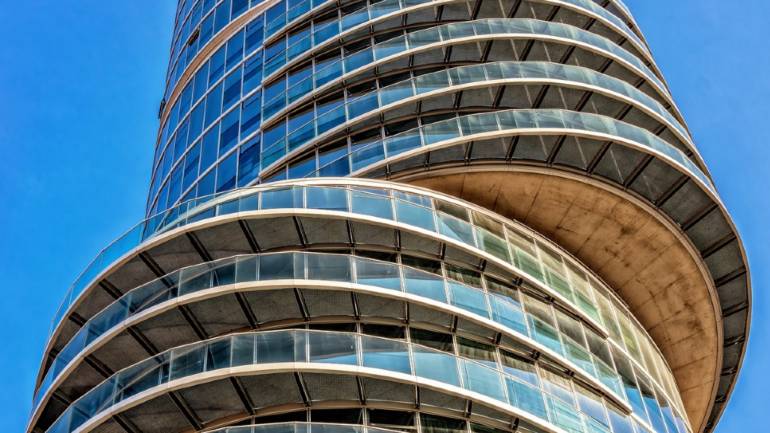

In 2018, a South Korean friend was deputed to head the India business of a company. He searched for over three months for a flat in Mumbai. Eventually, he opted for a spacious apartment in a luxurious complex in Worli at a monthly rent of Rs 4,00,000.
Residents of Mumbai will know that as the centre of business activity has shifted away from the south, localities like Worli have become the most sought after. Such is the lure of Worli that even premium projects at the congested Lower Parel promote themselves as being located in Worli.
One would have thought that my friend had found the best place that money could buy and would live comfortably. Yet, he opted to leave the city a year later. Frustrated by the traffic, repulsed by the hygiene and agonised by the infrastructure, Mumbai became unbearable. There were better cities for him to live, he said. The company that had contemplated purchasing an apartment for its Chief Executive Officer at a later stage dropped the plan.
I cite this example to address a sub-segment within real estate — luxury — that has been severely hit due to the collapse of Mumbai.
A different story
It is well known that real estate is dead in the commercial capital of India. While mid-level real estate survived a longer run despite weak fundamentals on account of an emotional attachment to owning a house, luxury real estate is a different ball game altogether. It has a very low threshold for poor quality — for a project or even a city.
There are several examples that can be used to demonstrate it but there is one that I think is worth highlighting: The uber-luxury Oberoi’s Three Sixty West at Prabhadevi. It consists of two towers – Tower A that will house the Ritz Carlton hotel and Tower B that comprises luxury residences that will be managed by Ritz Carlton. The lowest-priced apartment is around Rs 25 crore. It opened for bookings in 2014. The latest details on its performance is given below.

The table above shows the performance of the bigger configurations and it is undoubtedly very weak. In fairness, I must point out that a few configurations have seen a modest response.
Overall, it has however sold only 64 apartments, or 25 percent of its inventory, according to the latest investor presentation. Real-estate database platform which shows registration data, Zapkey.com, shows that buyers include the CEO of Axis Bank, Amitabh Chaudhry, actors such as Shahid Kapur, Ankit Chona of Havmor, etc. The project is nearing completion and it is unlikely to achieve a meaningful performance when it is done.
The reason for this particular example is that it has a few things going for it: A strong developer — Oberoi, great location — Prabhadevi, and a unique product offering. Yet, it has clearly fared poorly.
While I believe that Oberoi prices products at far too steep a premium, it will be churlish to deny that there are few developers in town that offer a similar quality. Equally, as I highlighted in the example at the start, the new key hub is Worli. Next door to it is another luxury project that had seen interest from the likes of cricketer Virat Kohli and his actress wife Anoushka Sharma.
Additionally, this is likely to be a product offering without a rival in the city. That’s its strength and perhaps its weakness as well.
Here is however where it went wrong. One, a flawed premise, much like other developers in central Mumbai, in the ability to absorb such high-priced inventory. Do keep in mind that GlobalData WealthInsight says there are 326,052 US dollar millionaires in India.
Scanning through data from RERA shows that 17 luxury projects in central Mumbai alone have built 9,712 flats. The value of unsold inventory in these projects? A whopping Rs 33,350 crore.
Two large projects like Lodha Park at Lower Parel and Piramal Aranya at Byculla have unsold inventory levels of almost Rs 4,500 crore each. Others haven’t fared much better as home prices and maintenance levels of Rs 50,000-100,000 per month make it unattractive.
Builders priced their products at levels of a Mercedes but built supply of the scale of Tata Motors. For projects like Oberoi Three Sixty West, the pool is smaller given their price point for their 256 flats. The challenge is: there are only 797 people in Mumbai boasting wealth of more than $30 million/Rs 200 crore.
Two, it may still have worked to a small extent if the city only had held up. But the absolute decay and collapse of Mumbai to such levels has ensured that the bright and rich find it neither a place to invest nor live in.
Infrastructure worries
Infrastructure had been decimated long ago with the annual ritual of a piece of it collapsing continuing unabated even now. Precious time wastage on the road is on the rise, with Mumbai ranked as the fourth-worst congested city in the world. Even the sole oft-repeated claim of the city being better in traffic discipline is no longer true.
The popular twitter handle, Roads of Mumbai, concerning traffic and roads shows that traffic discipline is now slipping to levels of a Tier 2 city. The challenge with luxury real estate development is this – it’s not only local but also national and even global as the wealthy have an array of choices to evaluate with easing of norms.
CEOs today privately concede that high-paying employees don’t want to make Mumbai their base anymore. Battered economies, especially in Europe, have made it easy to purchase premium real estate inventory in their country and offer permanent residency in return as a measure to stimulate their local economy.
Residency allows benefits like education opportunities for children, new business prospects and reliable policy framework. Different countries have different base investment requirements – but it broadly ranges between Rs 1.5 crore and Rs 5 crore. Most realty purchases by Indians are much higher than the base level.
I’m aware in the early part of the last decade when many of these projects in premium hubs had only commenced, things were not as bad for the city (or even for the economy). Today however there is near unanimity over the lack of a bang for the buck in the city.
The rich and successful had of course figured that out long before. And the casualty has been luxury real estate. The friend meanwhile found his better city — a congested metropolis called Jakarta.
When not busy with his newstoon platform Snapnews, Vishal Bhargava is a real estate enthusiast who views and reviews new projects. The views are personal.
[“source=moneycontrol”]




